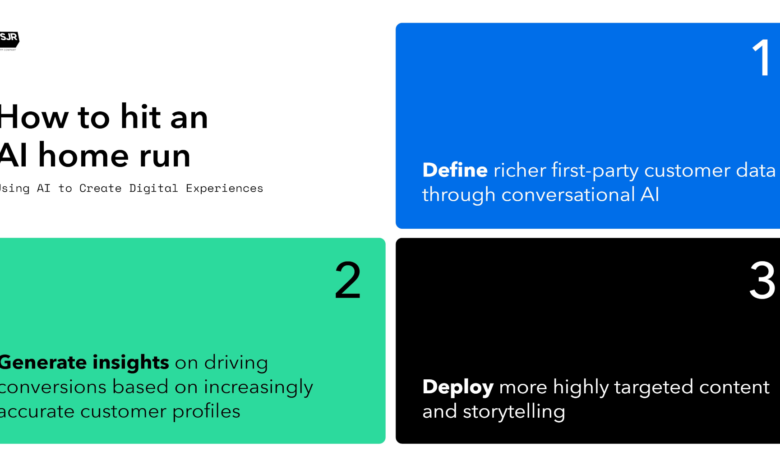Marketers, Stop Striking Out with the Wrong AI Strategy

When most marketers started playing with ChatGPT, DALL-E, Midjourney and other generative AI tools, what did they do? They asked the applications to do some of their work – to create content.
In the last 18 months, these tools and others have advanced rapidly. Now it’s not just armchair art directors and part-time editors who are thinking about generative AI and content. Many corporations are evaluating how generative AI can populate enterprise content across the marketing ecosystem – particularly creative assets and short-form copy.
What they’re doing, however, is swinging for the fences before they’re ready.
While content creation might seem like the easiest way to score a generative AI home run, it’s not the right place to start. In fact, it’s probably the least exciting area for growth.
Running Bases, 101
Imagine, instead, that the journey toward implementing AI effectively in marketing is like running bases.
Right now, everyone is running the wrong way, straight to the ‘third base’ or ‘home’ of generative content creation and deployment. Call it a desire for shiny new things, finding the lowest-hanging fruit, or imagined efficiencies and cost savings.
Like every good game, implementing AI in content marketing should begin at ‘first base’: data. After all, most games are won by singles.
With the AdTech landscape changing in front our eyes, from the deprecation of the cookie to increased regulation, companies need to improve the volume and quality of their first-party data.
At SJR, we’re helping clients analyse a new kind of first-party data derived from digital interactions between users and brands. Conversational data offers real-time insights into customer intentions, preferences and feedback in their own words, which are often unfiltered and rich in context. Ultimately, this more nuanced perspective will enable precision marketing and more personalised content creation.
Moving to ‘second base’ involves using this unbiased, owned conversational data to gather insights into what drives a meaningful action or conversion. These insights underpin a digital content and storytelling strategy, one that fills in gaps and addresses exactly what audiences are looking for. This stage combines AI and human brains to shape the direction and effectiveness of the next wave of content based on truly accurate profiles of customers’ needs and preferences.
Then, at ‘third base’ begins the actual creation of content and storytelling, leveraging insights and strategies developed in the previous steps.
Here, creation isn’t about volume. We’re already in a crisis of overproduction and reciprocal drops in viewership and audience attention. While competitors might use Gen AI tool to supercharge their content production, they’ll ultimately be putting out an obvious, generic product available to anyone (deft editing be damned).
Instead, to ‘bring it home,’ companies will deploy just the right amount of content – rigorously informed by generative insights and, in some cases, created by generative tools – that feel bespoke to their audiences’ specific needs.
Scoring Consistent Runs
Approached comprehensively, AI should be not just a tool for automation or for making a marketer’s workload a little lighter. It can be a fully fledged partner that helps companies constantly add runs to their scoreboards for the whole season and keep their fans satisfied and entertained.



